Inbox and environment News: Issue 394
February 24 - March 2, 2019: Issue 394
Environment, Safety And Traffic In Palm Beach To Be Impacted By Off Leash Dog Trial
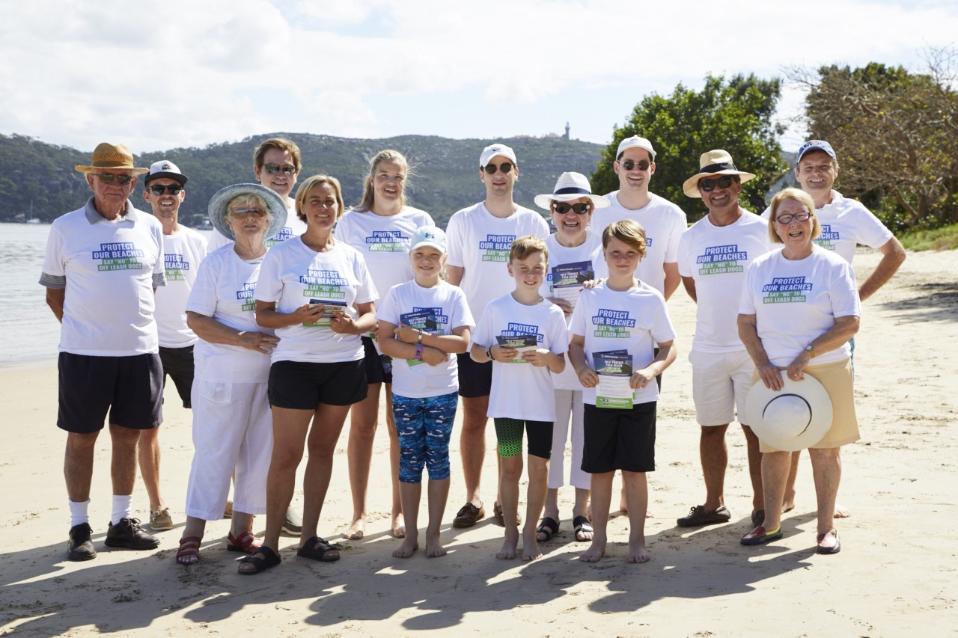
Photo: Volunteers from Palm Beach Protection Group - supplied.
February 19, 2019: Media release - Palm Beach Protection Group
A proposal to allow dogs to roam off leash on the Pittwater side of Palm Beach would increase ocean pollution, threaten bird life and marine life; and would increase the risk of dog attacks on families and visitors, according to a new grassroots community group.
Volunteers from the Palm Beach Protection Group came together on the weekend to letterbox flyers and discuss the impact of the proposed trial at Station Beach, where dogs would be allowed to run off leash.
Palm Beach Protection Group’s Richard Kovacs said allowing dogs to roam off leash on the beach is completely in conflict with the family-friendly nature of the beach.
“Station Beach is one of the most child and family friendly beaches on the peninsula and we are particularly concerned about safety and potential dog attacks on the young and old,” said Robert Constable who has lived on Station Beach for more than 35 years.
“Not all dogs are dangerous off leash, but there were nearly 700 dog attacks across Sydney in the first half of last year, including 38 on the Northern Beaches.
“The proposed trial times and area is totally incompatible with the current usage of the beach – dog owners already ignore existing signage and no amount of signage will be able to enforce where dogs are allowed to be off leash,” Mr Kovacs said.
A similar trial to allow dogs off leash on Station Beach in 2008 was rejected by the then Pittwater Council due to environmental concerns.
“These concerns remain today – the seagrass is a vital for our fragile eco-system including seahorses that are endemic to NSW. The pollution from dog faeces presents an issue for the environment and human health. There would also be nothing to stop dogs roaming onto the adjacent golf course, across the road and onto the ocean side of Palm Beach,” said Mr Kovacs.
“Added to this, since 2008, there has been a further increase in visitors and tourists to Palm Beach. The completion of the Barrenjoey Walkway in 2018 has increased visitor numbers and the beach has remained vulnerable since the June 2016 storms,” Mr Kovacs said.
“This trial will dramatically increase traffic and parking congestion, with a similar trial at Wanda Beach in the Sutherland Shire in 2004 attracting up to 2,000 dogs per day on weekends,” Mr Kovacs said.
The Wanda Beach trial was abandoned after three weeks due to two serious dog attacks, limited enforcement resources, dogs being off leash in prohibited areas and dog faeces being left on the beach and in the sand dune area.
Station Beach is on the Pittwater side of Palm Beach, next to the Boathouse café, in front of the Palm Beach Golf Course and a short distance from the Barrenjoey Lighthouse which sits within the Ku-ring-gai National Park.
Other major beachside Councils in Sydney do not allow dogs on their beaches – including Waverley (Bondi and Bronte) and Randwick (Coogee, Clovelly and Maroubra).
“Our group supports off leash areas, but there are already 28 off leash dog parks in the Northern Beaches Council area. Dogs don’t belong on beaches where the environment is impacted and where families, children and important wildlife gather,” said local resident Diana Hrdina.
“We believe this trial would create a dangerous precedent whereby all beaches on the peninsula could become open to off leash dogs.
“We’re asking people who care about our beaches to vote ‘No’ to the proposed trial on the Council’s website before public submissions close on Thursday 28 February,” said Mrs Hrdina.
For more information, visit www.protectpalmbeach.com.au, and follow the Palm Beach Protection Group on Facebook: www.facebook.com/protectpalmbeach.
To vote ‘No’ to the trial, visit the Council’s website: yoursay.northernbeaches.nsw.gov.au/stationbeachtrial.

Photo: Volunteers from Palm Beach Protection Group - supplied.
February 19, 2019: Media release - Palm Beach Protection Group
A proposal to allow dogs to roam off leash on the Pittwater side of Palm Beach would increase ocean pollution, threaten bird life and marine life; and would increase the risk of dog attacks on families and visitors, according to a new grassroots community group.
Volunteers from the Palm Beach Protection Group came together on the weekend to letterbox flyers and discuss the impact of the proposed trial at Station Beach, where dogs would be allowed to run off leash.
Palm Beach Protection Group’s Richard Kovacs said allowing dogs to roam off leash on the beach is completely in conflict with the family-friendly nature of the beach.
“Station Beach is one of the most child and family friendly beaches on the peninsula and we are particularly concerned about safety and potential dog attacks on the young and old,” said Robert Constable who has lived on Station Beach for more than 35 years.
“Not all dogs are dangerous off leash, but there were nearly 700 dog attacks across Sydney in the first half of last year, including 38 on the Northern Beaches.
“The proposed trial times and area is totally incompatible with the current usage of the beach – dog owners already ignore existing signage and no amount of signage will be able to enforce where dogs are allowed to be off leash,” Mr Kovacs said.
A similar trial to allow dogs off leash on Station Beach in 2008 was rejected by the then Pittwater Council due to environmental concerns.
“These concerns remain today – the seagrass is a vital for our fragile eco-system including seahorses that are endemic to NSW. The pollution from dog faeces presents an issue for the environment and human health. There would also be nothing to stop dogs roaming onto the adjacent golf course, across the road and onto the ocean side of Palm Beach,” said Mr Kovacs.
“Added to this, since 2008, there has been a further increase in visitors and tourists to Palm Beach. The completion of the Barrenjoey Walkway in 2018 has increased visitor numbers and the beach has remained vulnerable since the June 2016 storms,” Mr Kovacs said.
“This trial will dramatically increase traffic and parking congestion, with a similar trial at Wanda Beach in the Sutherland Shire in 2004 attracting up to 2,000 dogs per day on weekends,” Mr Kovacs said.
The Wanda Beach trial was abandoned after three weeks due to two serious dog attacks, limited enforcement resources, dogs being off leash in prohibited areas and dog faeces being left on the beach and in the sand dune area.
Station Beach is on the Pittwater side of Palm Beach, next to the Boathouse café, in front of the Palm Beach Golf Course and a short distance from the Barrenjoey Lighthouse which sits within the Ku-ring-gai National Park.
Other major beachside Councils in Sydney do not allow dogs on their beaches – including Waverley (Bondi and Bronte) and Randwick (Coogee, Clovelly and Maroubra).
“Our group supports off leash areas, but there are already 28 off leash dog parks in the Northern Beaches Council area. Dogs don’t belong on beaches where the environment is impacted and where families, children and important wildlife gather,” said local resident Diana Hrdina.
“We believe this trial would create a dangerous precedent whereby all beaches on the peninsula could become open to off leash dogs.
“We’re asking people who care about our beaches to vote ‘No’ to the proposed trial on the Council’s website before public submissions close on Thursday 28 February,” said Mrs Hrdina.
For more information, visit www.protectpalmbeach.com.au, and follow the Palm Beach Protection Group on Facebook: www.facebook.com/protectpalmbeach.
To vote ‘No’ to the trial, visit the Council’s website: yoursay.northernbeaches.nsw.gov.au/stationbeachtrial.
Overhaul For Pittwater's Commercial Fishing Rules
Friday February 22, 2019: From Office of Rob Stokes, MP for Pittwater
Commercial fishing changes are being introduced in the Pittwater estuary.
Through the cooperation of the small number of commercial fishing operators who work in the estuary, changes have been voluntarily agreed to amend the areas and methods permitted to be used for commercial fishing activity in the Pittwater.
Key changes include:- Prohibiting commercial hauling south of a line between Sand Point at Palm Beach and The Basin
- No mesh netting during daylight hours
- No mesh nets to be set and left unattended
- Modifying traps and nets to reduce by-catch
- Better identification of floats to reduce navigational risks
“The Pittwater is one of our most important and impressive natural assets,” Rob Stokes said today.
“The environmental and economic sustainability of the estuary has benefits for our whole community.
“These changes reflect a positive plan to ensure the ongoing health and functionality of the waterway.
“There has been long-standing concern about conflict between the different users of the waterway and the need to strike a better balance into the future.
“This is an encouraging example of government, industry and the community working together to deliver an outcome that will have wide-reaching benefits,” Rob Stokes said.
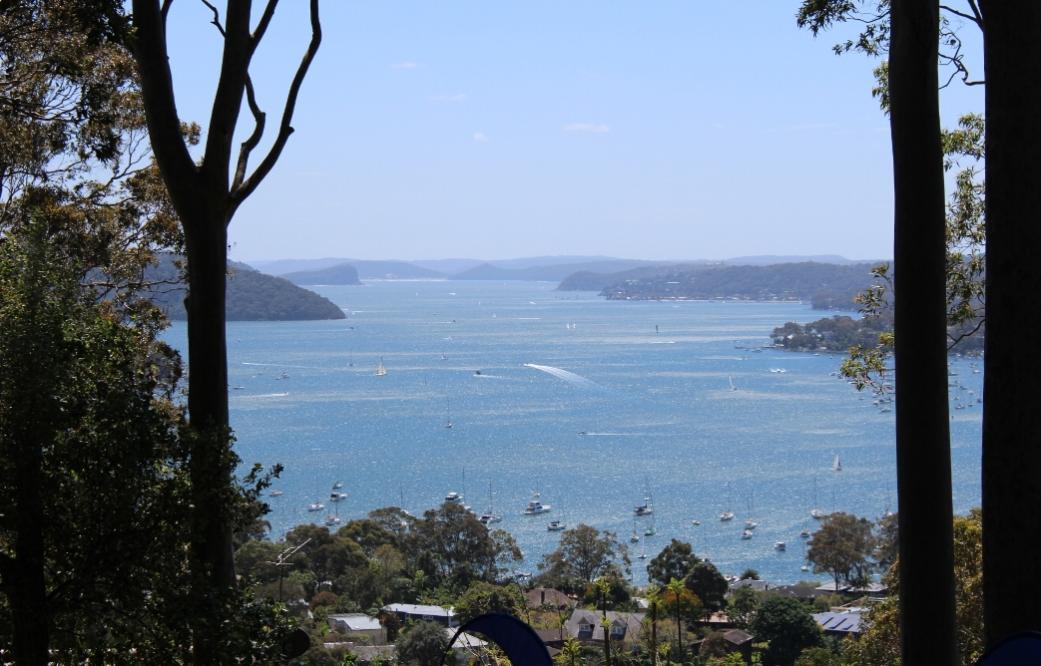
- Prohibiting commercial hauling south of a line between Sand Point at Palm Beach and The Basin
- No mesh netting during daylight hours
- No mesh nets to be set and left unattended
- Modifying traps and nets to reduce by-catch
- Better identification of floats to reduce navigational risks

Turimetta Beach Clean Up
ON: Sunday, February 24, 2019 at 10 AM – 12 PMCome and join us for our February clean up at Turimetta Beach. We'll meet in the grass area close to Narrabeen Park Parade at the northern end - see map in our event.
We have gloves (only a few kids gloves - sorry), bags and buckets. We'll clean up this area to try and catch all the litter before it enters the ocean. We're trying to remove as much plastic and rubbish as possible - of course it's ok if you need to leave earlier - we're happy for any help!
It's the first time the crew is at Turimetta Beach so this will be exciting.
We're a friendly group of people and everyone is welcome to this family friendly event. It's a nice community - make some new friends and do a good deed for the planet at the same time.
Parking on the streets close by. Message us here or on Instagram if you are lost. All welcome - the more the merrier. Please invite your friends too.
Friends Of Narrabeen Lagoon Catchment February 2019 Forum
7pm Monday Feb 25 2019 Coastal Environment Centre, Pelican Path, Lake Park Road, Narrabeen Possums, Gliders and Fauna Surveys
Jayden Walsh and Brad Law will shine a light on the behaviour of our native animals — particularly possums (including the endangered pygmy possum) and gliders.
Brad Law, who is an expert on Eastern Pygmy Possums, will also give some insights about local fauna surveys.
Make sure you put February 25 in your diary and , so that you don’t miss out, book your ticket early by emailing Judith Bennett at - email@narrabeenlagoon.org.au
Bush Regeneration Belrose area - Thursday mornings Belrose area - Weekend mornings Contact: Conny Harris 0432 643 295 Wheeler Creek - Wed mornings 9-11am Contact: Judith Bennett 0402 974 105
Waterbirds Of The Northern Beaches Talk
Saturday, 9 March 2019 - 2:00pm to 4:00pmA presentation by Russell Beardmore, local bird expert, of the waterbirds to be found in the Northern Beaches followed by afternoon tea.
Pricing: FREE - no bookings requiredLocationStony Range Regional Botanic Garden810 Pittwater RdDee Why NSW
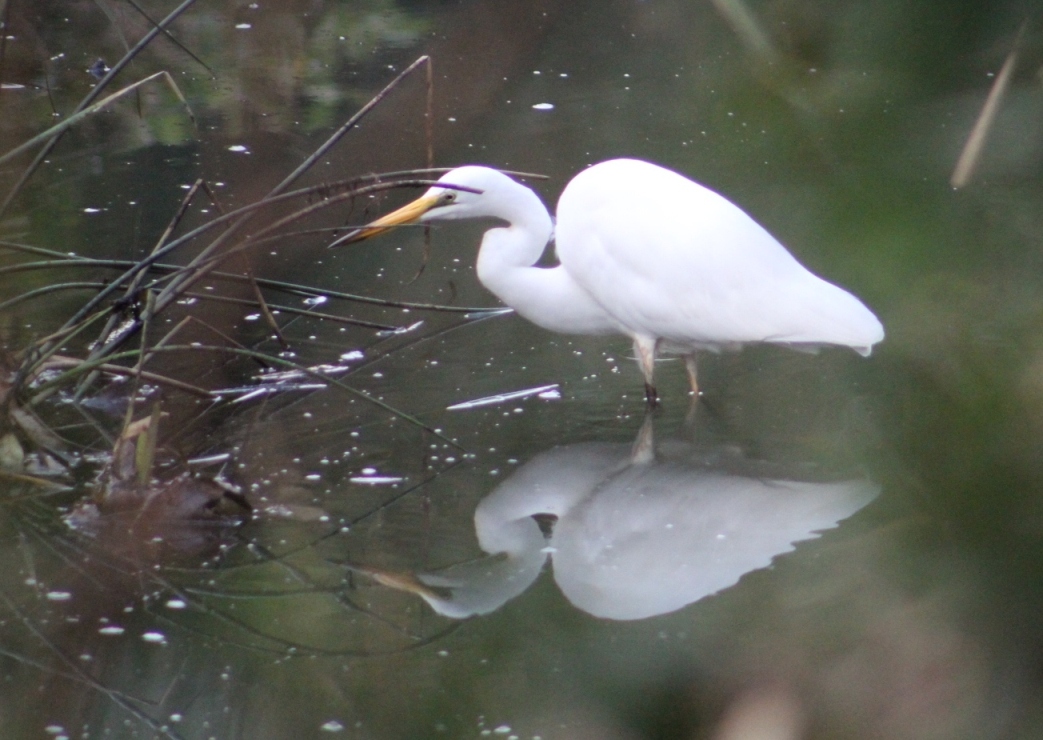

Clean Up Australia Day 2019
Business Clean Up Day – Tuesday 26 February 2019
Youth and Schools Clean Up Day – Friday 1 March 2019
Clean Up Australia Day – Sunday 3 March 2019
Business Clean Up Day – Tuesday 26 February 2019
Youth and Schools Clean Up Day – Friday 1 March 2019
Clean Up Australia Day – Sunday 3 March 2019
Local Clean Ups - By Postcode
2108
Coasters Retreat, Pittwater
Sunday 03rd March 15:00
Meeting Point: Fire brigade fire shed
Site Supervisor: Wilma TaylorKiddies Corner, Palm Beach
Sunday 03rd March 09:00
Meeting Point: On the beach, southern end of Palm Beach off beach road.
Site Supervisor: Carmen Bolton
2107
William Street, Avalon Beach
Sunday 03rd March 08:30 - 11:30
Meeting Point: Eastern end of William St, near track through mangroves.
Site Supervisor: Julie Bennett
2106
Newport beach
Sunday 03rd March 10:30 - 12:00
Meeting Point: Bert Payne Park bear the surf club
Site Supervisor: Matt James
2105
Elvina Bay, Pittwater
Saturday 02nd March 12:00
Meeting Point: Elvina Park
Site Supervisor: Melinda Broughton
Fitzpatrick Avenue, Scotland Island
Sunday 03rd March 09:00 - 13:00
Meeting Point: Cargo Wharf
Site Supervisor: Cass Gye
Lowanna Street, Scotland Island
Sunday 03rd March 09:00 - 13:00
Meeting Point: Eastern Wharf
Site Supervisor: Cass Gye
Harold Avenue, Scotland Island
Sunday 03rd March 09:00 - 13:00
Meeting Point: Carols Wharf
Site Supervisor: Cass Gye
Vivian Street, Scotland Island
Sunday 03rd March 09:00 - 13:00
Meeting Point: Bell Wharf
Site Supervisor: Cass Gye
Elizabeth Park, Scotland Island
Sunday 03rd March 09:00 - 13:00
Meeting Point: Cargo Wharf
Site Supervisor: Cass Gye
Pitt View Street, Scotland Island
Sunday 03rd March 09:00 - 13:00
Meeting Point: Tennis Wharf
Site Supervisor: Cass Gye
Pittwater Road, Church Point
Sunday 03rd March 09:00 - 13:00
Meeting Point: Church Point Ferry Wharf
Site Supervisor: Cass Gye
Bayview Scout Hall and surrounds
Sunday 03rd March 09:00 - 11:00
Meeting Point: Bayview Scout Hall - come inside, sign up and collect a bag and gloves.
Site Supervisor: Jenny Hermann
2103
Mona Vale Beach, Mona Vale
Sunday 03rd March 10:00 - 12:00
Meeting Point: Meet at the northern end of The Basin on the grass area next to beach.
Site Supervisor: Tina Mollema
2102
Warriewood Beach
Sunday 03rd March 09:30 - 10:00
Meeting Point: Meet at the small timber platform next to the power pole, on the beach beside the car park.
Site Supervisor: Bruce Kelly
2101
Sanctuary Island, Wimbledon Avenue, North Narrabeen
Sunday 03rd March 09:00 - 12:00
Meeting Point: Park at end of Wimbledon Avenue
Site Supervisor: Rick Shires
Coasters Retreat, Pittwater
Sunday 03rd March 15:00
Meeting Point: Fire brigade fire shed
Site Supervisor: Wilma Taylor
Kiddies Corner, Palm Beach
Sunday 03rd March 09:00
Meeting Point: On the beach, southern end of Palm Beach off beach road.
Site Supervisor: Carmen Bolton
2107
William Street, Avalon Beach
Sunday 03rd March 08:30 - 11:30
Meeting Point: Eastern end of William St, near track through mangroves.
Site Supervisor: Julie Bennett
2106
Newport beach
Sunday 03rd March 10:30 - 12:00
Meeting Point: Bert Payne Park bear the surf club
Site Supervisor: Matt James
2105
Elvina Bay, Pittwater
Saturday 02nd March 12:00
Meeting Point: Elvina Park
Site Supervisor: Melinda Broughton
Fitzpatrick Avenue, Scotland Island
Sunday 03rd March 09:00 - 13:00
Meeting Point: Cargo Wharf
Site Supervisor: Cass Gye
Lowanna Street, Scotland Island
Sunday 03rd March 09:00 - 13:00
Meeting Point: Eastern Wharf
Site Supervisor: Cass Gye
Harold Avenue, Scotland Island
Sunday 03rd March 09:00 - 13:00
Meeting Point: Carols Wharf
Site Supervisor: Cass Gye
Vivian Street, Scotland Island
Sunday 03rd March 09:00 - 13:00
Meeting Point: Bell Wharf
Site Supervisor: Cass Gye
Elizabeth Park, Scotland Island
Sunday 03rd March 09:00 - 13:00
Meeting Point: Cargo Wharf
Site Supervisor: Cass Gye
Pitt View Street, Scotland Island
Sunday 03rd March 09:00 - 13:00
Meeting Point: Tennis Wharf
Site Supervisor: Cass Gye
Pittwater Road, Church Point
Sunday 03rd March 09:00 - 13:00
Meeting Point: Church Point Ferry Wharf
Site Supervisor: Cass Gye
Bayview Scout Hall and surrounds
Sunday 03rd March 09:00 - 11:00
Meeting Point: Bayview Scout Hall - come inside, sign up and collect a bag and gloves.
Site Supervisor: Jenny Hermann
2103
Mona Vale Beach, Mona Vale
Sunday 03rd March 10:00 - 12:00
Meeting Point: Meet at the northern end of The Basin on the grass area next to beach.
Site Supervisor: Tina Mollema
2102
Warriewood Beach
Sunday 03rd March 09:30 - 10:00
Meeting Point: Meet at the small timber platform next to the power pole, on the beach beside the car park.
Site Supervisor: Bruce Kelly
2101
Sanctuary Island, Wimbledon Avenue, North Narrabeen
Sunday 03rd March 09:00 - 12:00
Meeting Point: Park at end of Wimbledon Avenue
Site Supervisor: Rick Shires
A Survey On Ticks And Wildlife In The Northern Beaches
The University of Sydney is conducting a study to better understand how residents and their pets are encountering ticks and wildlife in their backyards. We invite all Northern Beaches residents to participate in our survey.
Coastal bushland remnants and other green spaces across the Northern Beaches are home to a variety of native plants and animals. They also provide a place for residents to enjoy their favourite outdoor pastimes. Paralysis ticks (Ixodes holocyclus) are common in the Northern Beaches and feed on a wide range of animal hosts during their life cycle. Understanding the complex relationship between ticks and their host species is an essential part of our research. The information we gain will contribute to our growing knowledge of ticks and will guide future research efforts.
We aim to identify:- Areas where people are encountering ticks more than others (tick 'hotspots'),
- Backyard and landscape features that may influence tick presence, and
- Wildlife using backyards and how this might or might not influence tick occurrence
To meet these aims, it is important for you to provide a street address. If you would prefer not to, we ask that you provide your street name and nearest cross street. It is important for us to create a map of tick encounters to understand what landscape features might influence tick presence and where to target future research.
All identifying information will be removed from any data presentations.
The survey should only take approximately 10 minutes to complete and is voluntary.
If you have any questions about the project, please contact PhD candidate Casey Taylor on 02 9351 3189 or casey.taylor@sydney.edu.au. This project is being undertaken by the University of Sydney in association with Northern Beaches Council.
Your participation is greatly appreciated.
This research has been approved by the University of Sydney Human Ethics committee. (Approval no: 2018/157)
- Areas where people are encountering ticks more than others (tick 'hotspots'),
- Backyard and landscape features that may influence tick presence, and
- Wildlife using backyards and how this might or might not influence tick occurrence
Archie's Pittwater Clean Up
My name is Archie Mandin
I am a Seabin Ambassador, I started this campaign because I want to take a stand against ocean plastics!
My goal is to raise enough money to bring a minimum of 20 Seabins to Pittwater NSW as I want to give The Northern Beaches the opportunity to reduce its plastic pollution impact on the ocean. Its amazing how much accidental rubbish comes down our creeks and into our waterways
I need your help to raise money to buy the Seabins a revolutionary ocean cleaning technology which is essentially a floating rubbish bin that operates 24/7 catching all floating debris in the water.
The Seabin helps clean the ocean of floating debris which in turn creates cleaner oceans and we all benefit from this in one way or another. I mean, who really wants to swim in pollution? Not me that’s for sure!
Did you know that 300 million tons of plastic are produced in the world every year, half of which is for single use products, from this more than 8 million tons of plastic is dumped into our oceans every year. We need to do something about it and now with the purchase of a Seabin we can all participate and make a difference!
Join me and my campaign to help ensure cleaner oceans!
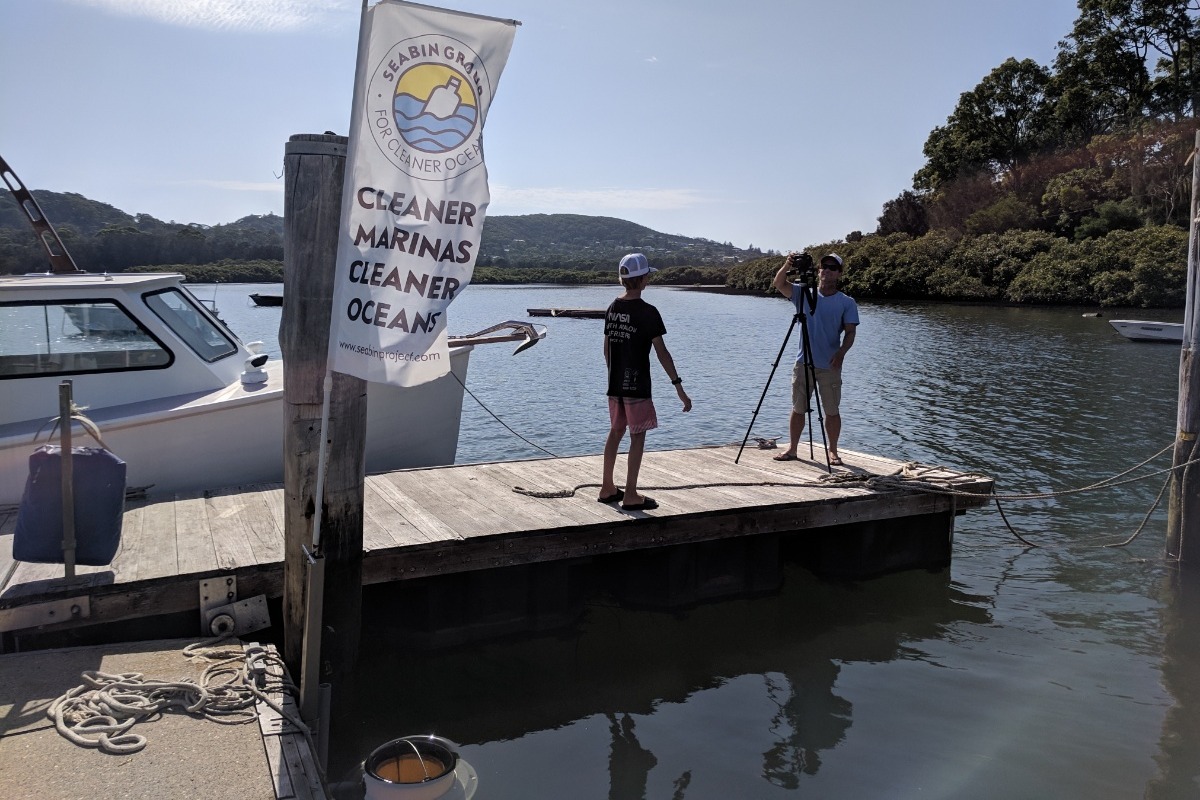
What’s a Seabin? The Seabin is a floating rubbish bin that is located in the water at marinas, docks, yacht clubs and commercial ports.
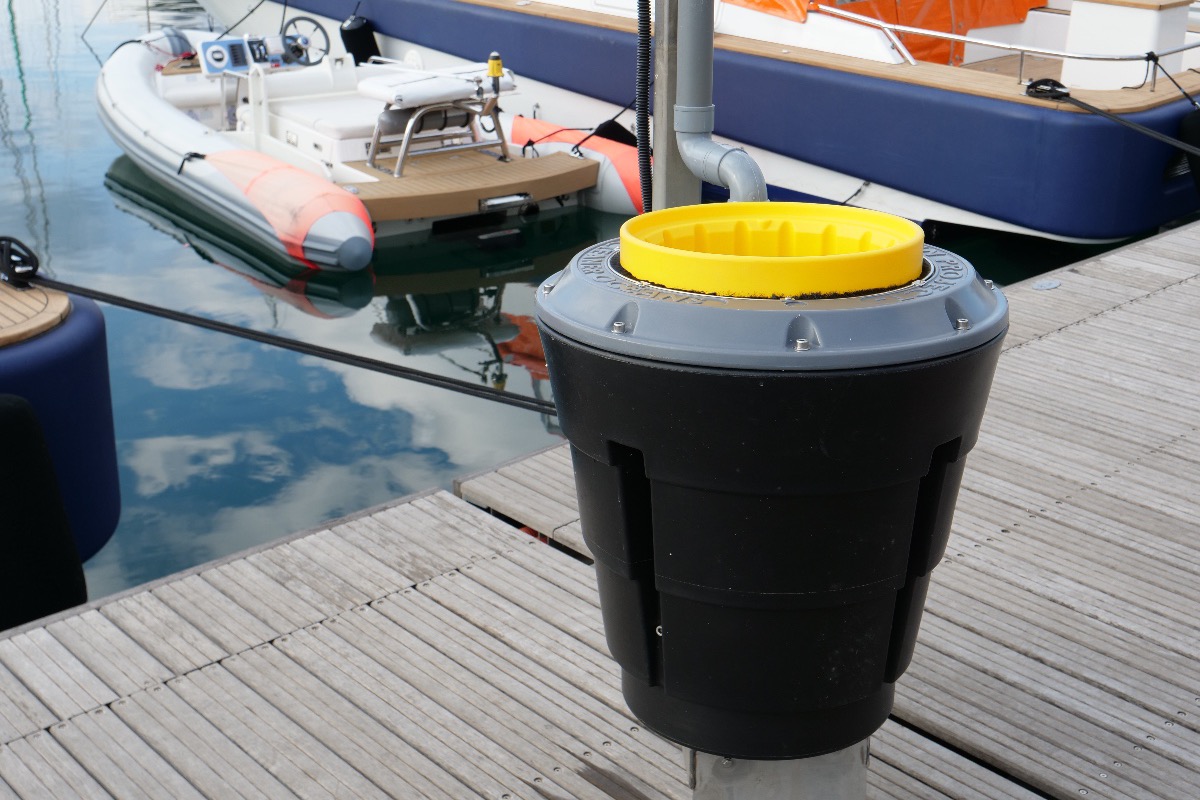
The Seabin can catch an average of 3.9kgs of floating debris per day which adds up to 1.4 tons per year. (depending on weather conditions and debris volumes) The Seabins is catching large plastic bags, bottles, plastic straws, coffee cups, food wrappers, surface oils and micro plastics down to 2 mm small.
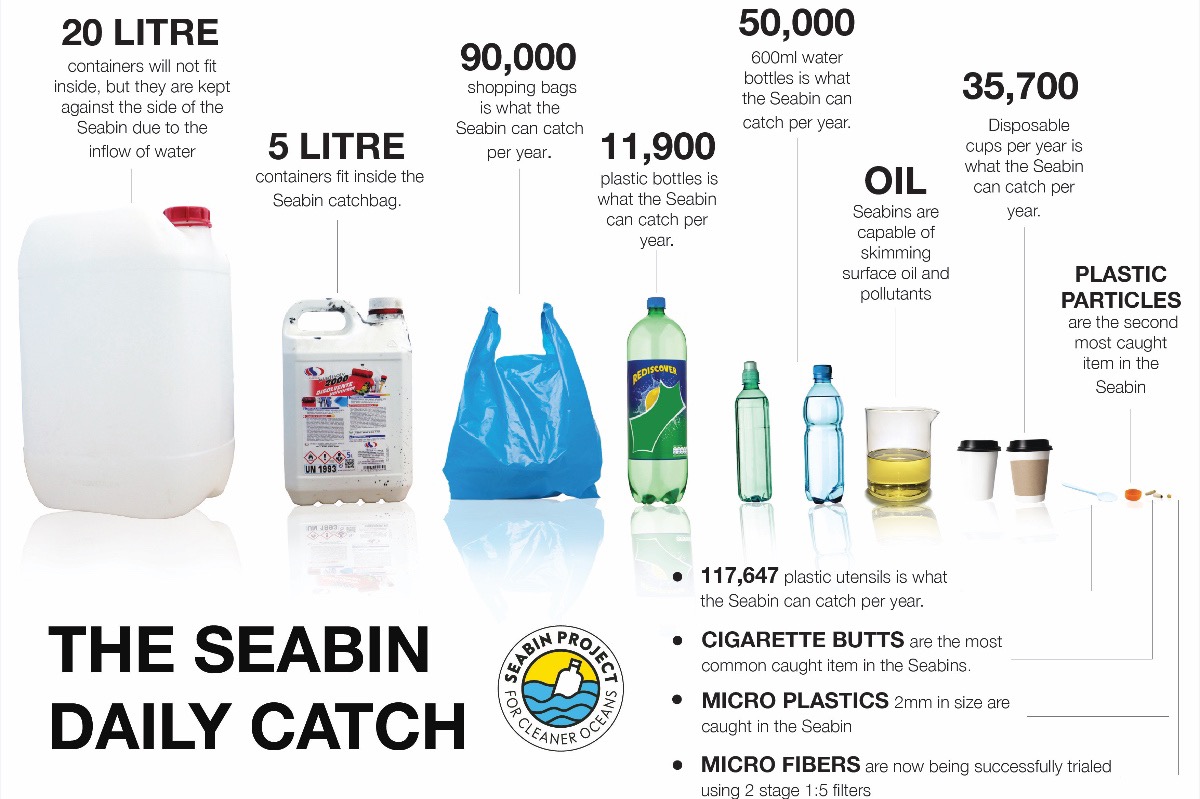
How can a Seabin contribute to cleaner oceans?The Seabin contributes to cleaner oceans by removing 1.4 tons of floating debris per unit per year. The location of the Seabin in marinas is ideal and where it matters most, close to the source of entry for floating debris. Ports and Marinas are perfect locations to stop floating debris from entering the open ocean and ocean plastics are also brought in by wind and currents.
Are the Seabins a danger to marine life?The fish According to the team at Seabin, stay away from the surface of the water where the Seabin sucks in the water. They are deterred by the force of the water current. If there are swarms of jellyfish or bait fish it is recommended that the Seabins are turned off until the swarms pass. If a fish was to accidentally go into the Seabin, it would be caught in the Seabin and stay submerged in water until the marina staff retrieve the filter and throw the fish still alive back into the water.
How does it work? Water is sucked in from the surface and passes through a catch bag inside the Seabin, with a submersible water pump capable of displacing 25.000 LPH (liters per hour). The water is then pumped back into the marina leaving litter and debris trapped in the catch bag to be disposed of properly.
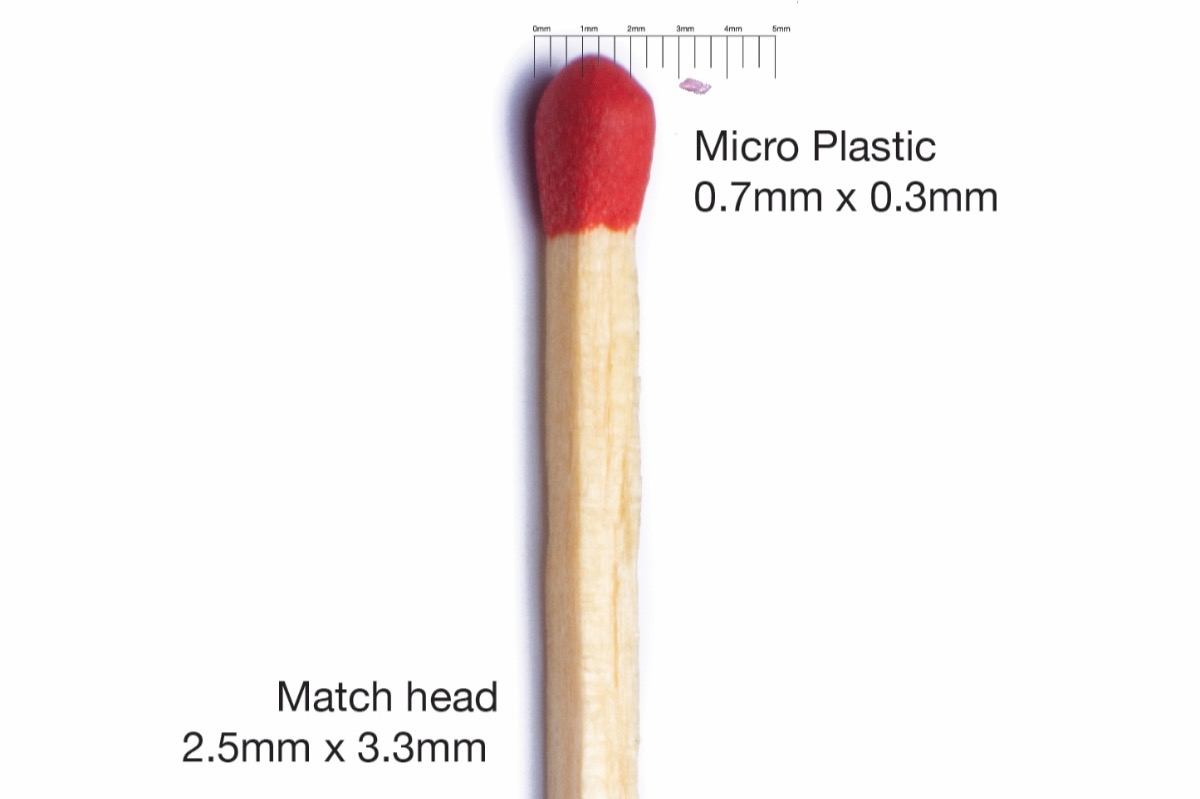
Who is responsible for the Seabin?This is the best part of it all, the marina will be the one responsible for the upkeep of the Seabins and also they will be paying for the energy consumption of the Seabin which is around $2 - $3 a day.
The marina enjoys a cleaner marina and the rest of us and the marine life enjoy cleaner oceans with less floating debris polluting our oceans!
Seabins part of a whole solutionSeabins whole solution is Technology, Education, Science, Research and Community. The reason for this is that Technology alone is not the solution to stopping ocean plastics, education is the real solution.

Great! Can our local community be involved also?Yes! The team at Seabin have interactive programs and lessons designed for schools, community and youth to interact with the Seabins and have over 2000 school students engaged around the world, this is something that we can do locally also with support from the team at Seabin Project.
What will we be doing if we participate in these programs?You would be joining an international community contributing important data and feedback on ocean plastics to the Seabin central data base. Renowned scientists, universities and environmental agencies are all a part of the programs also.
The lessons range from identifying ocean plastics to data collection of what the Seabins are catching weekly. The data collection is a very easy activity and where we can all see the measurable impact of debris the Seabins are taking out of the water in all weather conditions.
It’s as simple as counting how many plastic bags, plastic particles, food wrappers and then noting it down on a spreadsheet or app. Weather conditions and location information is also entered into the data base.
How can you help our campaign and make a difference in the world?Every contribution to this crowdfunding campaign helps, be it $1 or $50 dollars, it all adds up and bring us closer to our goal.
Even if you cannot afford a donation, please help by sharing this campaign with your friends and family on social media. The more people that know about the campaign the better!
Thanks everyone for taking the time to check out our campaign!
FOR CLEANER OCEANS!
Archie
FAQS SHEET
Seabin Project FAQs
Q: Can someone pay out the crowdfunding campaign goal?A: Yes! We need help! The more money we can raise, the more Seabins we can buy.
Q: Why crowdfund a Seabin?A: Until now, the Seabins were not for the everyday person to purchase because marinas ports and yacht clubs are the target market for Seabin Group. This is a way where everyday people can give something back to the oceans.
Q: How do Seabins work in tidal areas?A: Seabins at present are designed for floating docks and pontoons. The Seabins move up and down with the tide on the floating dock.
Q. How are the pumps run? A. The pumps are currently electric, and around $2-$3 a day to run.
Q: When are the Seabins available?A: Depending on your countries location, Seabins will be available Feb 2019.
Q: Do any fish get sucked into the Seabins? What about smaller marine life?A: There is a possibility of fish to enter the Seabins, however in the last 2 years of development, the Seabins have only caught a handful of small bait fish. Most of which have been thrown back into the water alive. The fish simply stay away from the flow of water entering the Seabin and with the current fine tuning of the Seabin, the risk is now minimal.
Q: I don’t have any money to donate, how can I help?A: Don’t worry! Your amazing anyways and thanks for even contacting us. We need help to share this project around with any media we can. Social media platforms like Facebook, Instagram, Twitter, websites, bloggers. Also with newspapers, magazines, tv, radio and journalists. Also friends and family!





FAQS SHEET
Seabin Project FAQs
Proximity To Land Determines How Coral Reef Communities Respond To Climate Change Events
February 22, 2019Severe weather and environmental disturbances, such as cyclones or thermal coral bleaching, affect specific areas of coral reefs differently, new research has shown.
A new international study has found that the marine wildlife that live amongst the coral are affected differently by devastating climate change events, depending on how close to the mainland they are found.
The research, co-authored by Laura Richardson from the University of Exeter, studied the effect of the natural disasters on the Great Barrier Reef (GBR) -- which is home to more than 1,500 species of fish including clownfish, parrotfish and lionfish.
The research studied three specific areas of the GBR -- the inner reefs closest to the mainland, middle-shelf reefs, and outer-shelf reefs, where the continental shelf drops off into the Coral Sea. Surveys of fish and coral reef habitat were made both five years before and six months after two severe cyclones and a mass coral bleaching event.
While those environmental events caused substantial and widespread loss of coral across all reefs, the numbers of herbivorous fishes remained stable (inner-shelf reefs) or even increased (middle- and outer-shelf reefs).
Dr Richardson, a marine biologist at the University of Exeter's Penryn Campus said: "After widespread loss of corals due to large storms or severe coral bleaching events, herbivorous reef fish are vital for removing seaweed that starts to grow over the dead corals, so that new corals can grow, and surviving corals can recover.
"Understanding how these herbivorous fish respond across the continental shelf highlights where reefs may be more vulnerable and possibly slower to recover.
"The increased number of herbivorous fish on some reefs in this study is highly promising as they can help prevent the proliferation of seaweed after these huge disturbances."
Importantly, however, the study showed that the number of herbivorous fish species decreased following the environmental events.
"The loss of species is of greatest concern, affecting the functioning of these reefs and their capacity to respond to future disturbances. It may be setting these reefs up for future ecological surprises" said Dr Hoey from James Cook University in Australia.
The researchers believe the study -- the first of its kind -- offers a pivotal insight to allow for better conservation and management of coral reefs found worldwide, particularly those reefs exposed to land-based sources of pollution and sedimentation.
The lead-author of the study, Eva McClure from James Cook University, said: "On coral reefs, it is common to find distinct communities of coral and reef fish living together at different locations across the continental shelf.
"But until now, we haven't known whether these different communities respond in the same way to environmental disturbances or whether specific local conditions might result in different community responses whether close to the mainland or further from shore."
Coral reefs are made up of thin layers of calcium carbonate (limestone) secreted over thousands of years by billions of tiny soft bodied animals called coral polyps. They are amongst the world's most diverse marine ecosystems and are home to thousands of species of plants and animals.
The Great Barrier Reef is the world's largest coral reef, stretching along the northeast coast of Australia, from the northern tip of Queensland, to just north of Bundaberg. However, the biggest differences in coral and fish communities tend to occur from east to west across the Great Barrier Reef.
For the study, conducted by the University of Exeter and James Cook University in Australia, the researchers looked at coral reefs in three distinct positions across the breadth of the continental shelf to compare how the marine life and habitat were affected by the loss of coral following severe environmental disturbances.
While each region was impacted by the disturbances, the research showed that the number of seaweed-eating fish increased on the middle and outer shelf areas, but not in the areas closest to the coast.
The researchers believe that the study not only offers a unique insight into how the reefs are impacted by severe environmental conditions, but also the potential for recovery shown by each specific region.
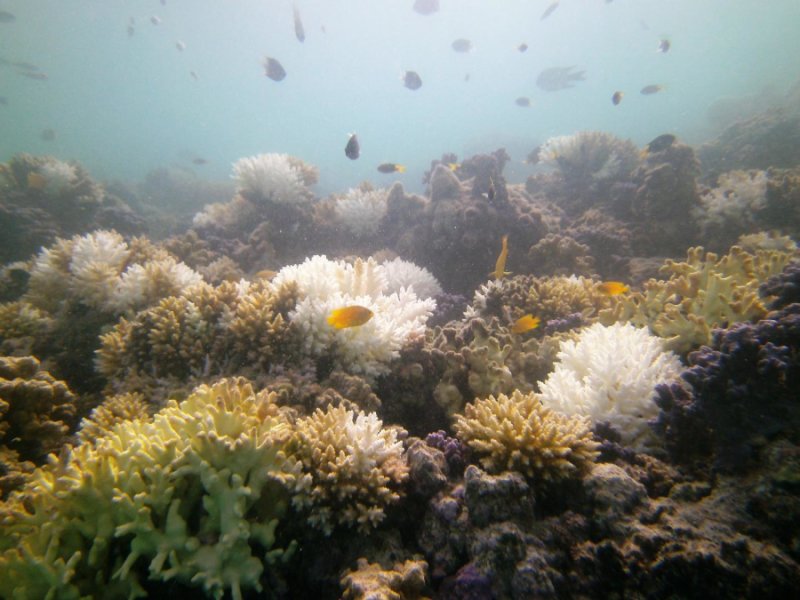
Coral bleaching. Credit: Laura Richardson
Eva McClure, Laura Richardson, Alexia Graba-Landry, Zoe Loffler, Garry Russ, Andrew Hoey. Cross-Shelf Differences in the Response of Herbivorous Fish Assemblages to Severe Environmental Disturbances. Diversity, 2019; 11 (2): 23 DOI: 10.3390/d11020023

World's Biggest Bee Found: Wallace's Giant Bee Has Been Rediscovered In Indonesia
February 22, 2019: University of SydneyLast seen in 1981 and thought lost to science, a team of scientists and conservationists, including Honorary Professor Simon Robson, has found Megachile pluto, the world's largest bee, in the forests of Indonesia.
Wallace's giant bee rediscoveredAn international team of scientists and conservationists has announced the finding of what many consider to be the ‘holy grail’ of bee discoveries – Wallace’s giant bee.
The bee (Megachile pluto) is the world’s largest, with a wingspan more than six centimetres (2.5 inches). Despite its conspicuous size, the bee has been lost to science since 1981.
In January, a search team that set out to find and photograph Wallace's giant bee successfully rediscovered the species in the North Moluccas, an island group in Indonesia. The find resurrects hope that more of the region’s forests still harbour this very rare species.
A member of the team, Honorary Professor Simon Robson from the School of Life and Environmental Sciences at the University of Sydney, said: “Amid such a well-documented global decline in insect diversity it’s wonderful to discover that this iconic species is still hanging on.”
Dr Robson and Dr Glen Chilton, an honorary professor at Saint Mary’s University in Canada, joined with Eli Wyman from Princeton University and Clay Bolt, a conservation photographer from Montana, to successfully rediscover this bee. The team was supported by Global Wildlife Conservation, an Austin, Texas, based organisation that runs a Search for Lost Species program.
'Flying bulldog'“It was absolutely breathtaking to see this ‘flying bulldog’ of an insect that we weren’t sure existed anymore,” said Clay Bolt, a natural history photographer specialising in bees, who took the first photos and video of the species alive after spending years researching the right habitat with collaborator and team member, Eli Wyman from Princeton University.
“To see how beautiful and big the species is in real life, to hear the sound of its giant wings thrumming as it flew past my head, was just incredible. My dream is to now use this rediscovery to elevate this bee to a symbol of conservation in this part of Indonesia.”
The female giant bee makes her nest in active arboreal termite mounds, using her large mandibles to collect sticky tree resin to line the nest and protect it from invading termites. In hot and humid conditions, and sometimes during torrential downpours, the team observed dozens of termite mounds over the course of the search.
It wasn’t until the last day of a five-day stop in an area of interest that the team found a single female Wallace’s giant bee living in an arboreal termites’ nest in a tree about 2.5 metres off the ground.
The bee is named after Alfred Russel Wallace, the co-discoverer alongside Charles Darwin of the theory of evolution through natural selection. Wallace, a British entomologist, discovered the giant bee exploring the Indonesian island of Bacan. He described the female bee, which is about the length a human thumb, as “a large black wasp-like insect, with immense jaws like a stag-beetle”.
The bee wasn’t seen again until 1981, when entomologist Adam Messer rediscovered it on three Indonesian islands and was able to observe some of its behaviour, including how it uses its mandibles to gather resin and wood for its nests. Since then, other teams have looked for the bee, with no luck.
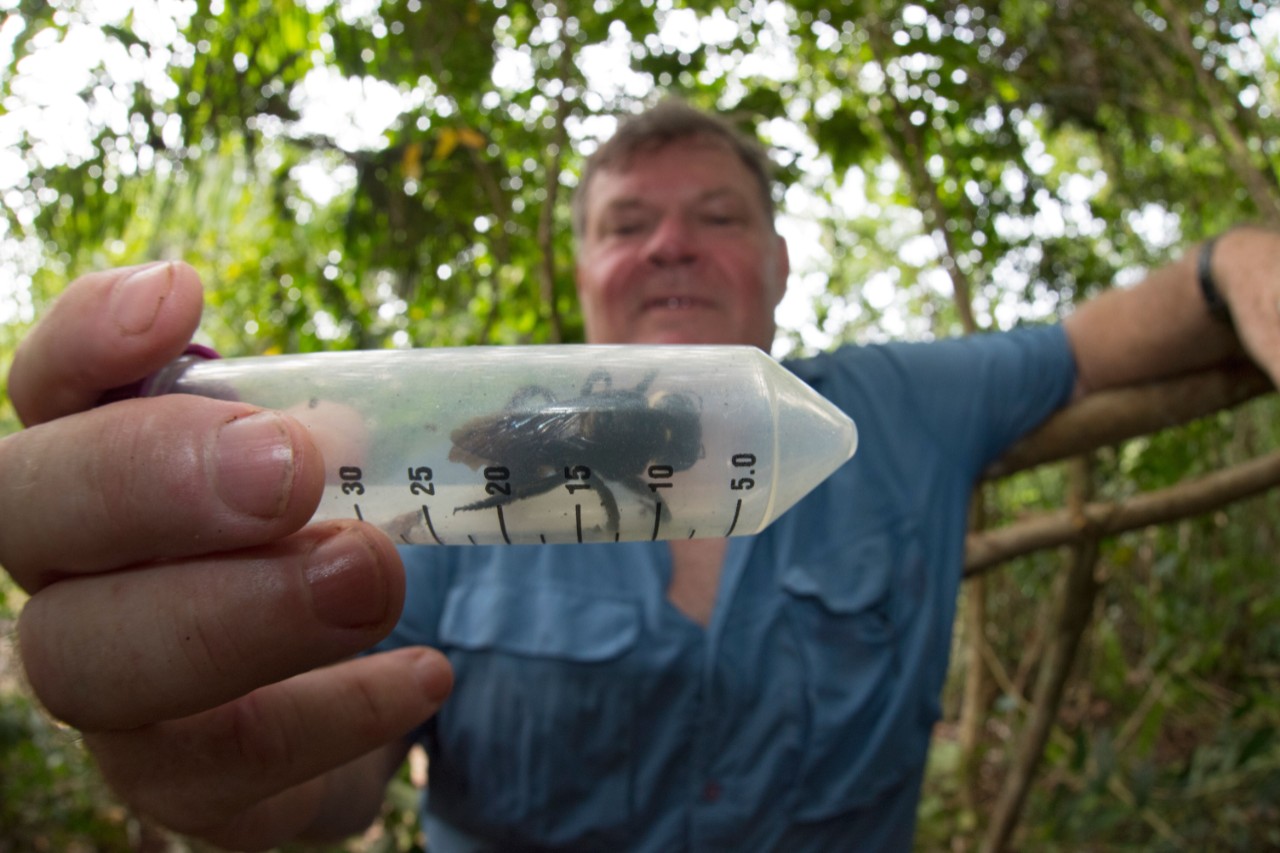
This is Simon Robson, honorary professor of biology at the University of Sydney and Central Queensland University in Australia, with Wallace's giant bee (Megachile pluto). Credit: © Clay Bolt: claybolt.com
“Messer’s rediscovery gave us some insight, but we still know next to nothing about this extraordinary insect,” said Mr Wyman. “I hope this rediscovery will spark research that will give us a deeper understanding of this unique bee and inform any future efforts to protect it from extinction.”
Although little is known about the bee, the species depends on primary lowland forest for resin and the nests of tree-dwelling termites, Mr Bolt said. In Indonesia, forest destruction for agriculture, however, threatens the habitat for this species and many others. Between 2001 and 2017, Indonesia lost 15 percent of its tree cover, according to Global Forest Watch.
The team has already started conversations with Indonesian collaborators to look for Wallace’s giant bee in other locations – with the hope of eventually working together to develop a plan to strengthen conservation measures for the bee.
A documentary film, In Search of the Giant Bee is now being produced by Vanessa Dylyn of Matter of Fact Media, in association with Glen Chilton.
Global Wildlife ConservationGWC conserves the diversity of life on Earth by safeguarding wildlands, protecting wildlife and supporting guardians. We maximize our impact through scientific research, biodiversity exploration, habitat conservation, protected area management, wildlife crime prevention, endangered species recovery, and conservation leadership cultivation. Learn more at http://globalwildlife.org
The Search for Lost SpeciesThe Search for Lost Species, a Global Wildlife Conservation initiative, is the largest-ever global quest to find and protect species that have not been seen in the wild in decades. In collaboration with more than 100 scientists, GWC has compiled a list of 1,200 species of animals and plants that are missing to science. From this list, GWC has teased the top 25 “most wanted” species in the world. Quirky, charismatic and elusive, these species are global flagships for conservation. Learn more at www.lostspecies.org/

Preserved Leaves Reveal 7000 Years Of Rainfall And Drought
February 15th, 2019: University of AdelaideA study by University of Adelaide researchers and Queensland Government scientists has revealed what south-east Queensland's rainfall was like over the last 7000 years -- including several severe droughts worse and longer lasting than the 12-year Millennium Drought.
The study -- published in Scientific Reports -- used preserved paper-bark tea tree leaves from North Stradbroke Island's Swallow Lagoon that have been collecting in the sediment for the past 7700 years.
The leaves -- analysed for chemical variation -- provided a wealth of information on the El Niño-Southern Oscillation (ENSO) and how it was impacted by major climate changes over the millennia, including the Little Ice Age from about 1450 to 1850.
Researchers found a generally wet period about 5000 to 6000 years ago -- indicating a more consistent La Niña-like climate.
"This changed to a more variable and increasingly drier climate about 3000 years ago -- highlighting a strengthened El Niño phase,'' says Associate Professor John Tibby from the University of Adelaide's Geography Department.
"There were substantial droughts during this phase, drier than the Millennium Drought which south-east Australia experienced from 1997-2009. In fact, from what we can ascertain, the probability of a drought worse than the Millennium Drought is much higher than the current prediction of one in 10,000 years.
"Our rainfall reconstruction suggests that it may be as much as 10 times more likely."
Associate Professor Tibby said the Little Ice Age, which ended about the time south-east Queensland was settled, was unusually wet.
The study was possible because Swallow Lagoon contains a continuous sequence of leaves from a single species of tree. Variations in the chemistry of these leaves allowed scientists to reconstruct past rainfall.
"Finding leaves preserved in lake sediments of this age is rare, and they can tell us a lot about the environment. For instance, the carbon isotope composition -- or chemistry -- of the leaves can tell us about the degree of moisture stress experienced by the plants when the leaves were growing,'' says Dr Cameron Barr from the University of Adelaide.
"So, in effect, we can use leaf carbon isotope composition to infer rainfall through time. Since North Stradbroke Island is in a part of Australia that is very sensitive to ENSO, our study is able to document ENSO history."
C. Barr, J. Tibby, M. J. Leng, J. J. Tyler, A. C. G. Henderson, J. T. Overpeck, G. L. Simpson, J. E. Cole, S. J. Phipps, J. C. Marshall, G. B. McGregor, Q. Hua, F. H. McRobie. Holocene El Niño–Southern Oscillation variability reflected in subtropical Australian precipitation. Scientific Reports, 2019; 9 (1) DOI: 10.1038/s41598-019-38626-3
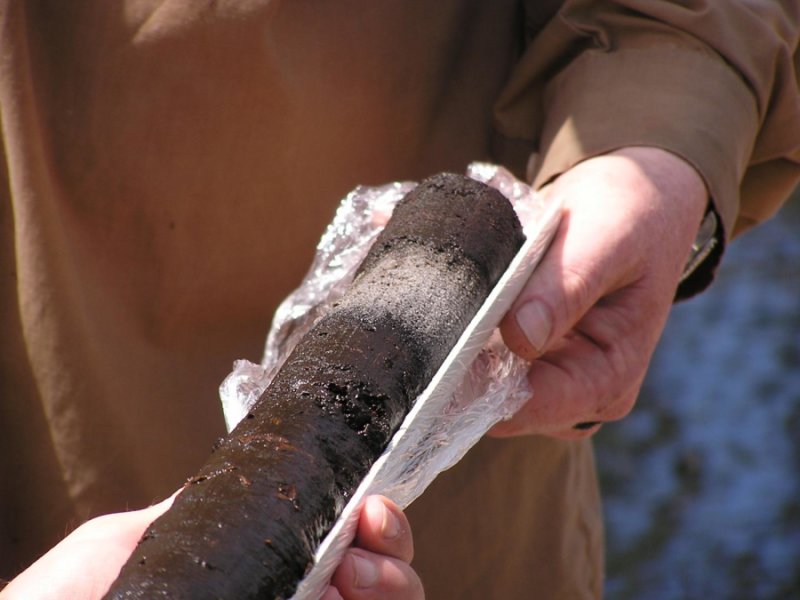
This is a sediment core sample from Swallow Lagoon. Credit: John Tibby, University of Adelaide

From Vibrations Alone Acacia Ants Can Tell Nibbles From The Wind
February 15th, 2019: Cell PressAcacia trees are a prominent feature of the East African savannah. They're also a classic example of the long-standing and complex relationships between plants and insects, in this case acacia ants. The acacias provide food in the form of nectar and accommodation in hollow thorns for the ants. In return, the ants defend the acacias against nibbling elephants, giraffes, or other animals that would eat them.
Now, researchers reporting in the journal Current Biology on February 14 find that the ants are tipped off to the presence of herbivores by vibrations that run throughout the trees when an animal gets too close or begins to chew. As a result, the insects begin patrolling the acacia's branches more actively. Remarkably, the researchers show, the ants don't react when the trees' movements are caused only by the wind.
"The vibrations that occur when a mammal plucks a leaf are so powerful that they spread across the whole tree and are perceived by the ants," says Felix Hager of Ruhr University Bochum, Germany. "As a result, the ants are alerted within a fraction of a second and promptly orient toward the attacker."
Hager and study co-author Kathrin Krausa began to suspect that vibrations were important while working in the Kenyan savannah. "We often inadvertently touched the acacia branches and backed off because of the very fast and disruptive attacks of ants that swarmed on us," Krausa says. "It struck us that it was assumed that odors associated with plant damage alert the ants. As biotremologists studying vibrations, we felt that this is only half of the story."
Hager and Krausa thought that vibrations might be a more immediate and reliable information source for the ants. To test this, the researchers first measured vibrations in acacia induced by the wind and a by browsing goat. Then, they devised a mechanical device calibrated so as to reproduce the movement associated with a chewing, four-legged mammal.
Their studies show that acacia ants respond to vibrations associated with a simulated herbivore, but not to the wind. They could respond to vibrations originating at some distance away. In almost every case, the ants also responded by heading toward the source of those vibrations. In other words, not only did they feel the vibrations, but they could tell based on them which way to go.
"If an ant detects vibrations due to an elephant nibbling at its tree, it needs to find the attacker as soon as possible and decide in which direction to go," Krausa says. "We were impressed by the ants. Spread all over the tree, they made the right decision and walked toward the vibration source to fight back against the attacker almost every time."
Hager says that this is just the beginning of studies to explore the vibration sense. "We've just started to understand this mode of communication," he says. "There is a lot of work waiting for us!"
Felix A. Hager, Kathrin Krausa. Acacia Ants Respond to Plant-Borne Vibrations Caused by Mammalian Browsers. Current Biology, 2019; DOI: 10.1016/j.cub.2019.01.007
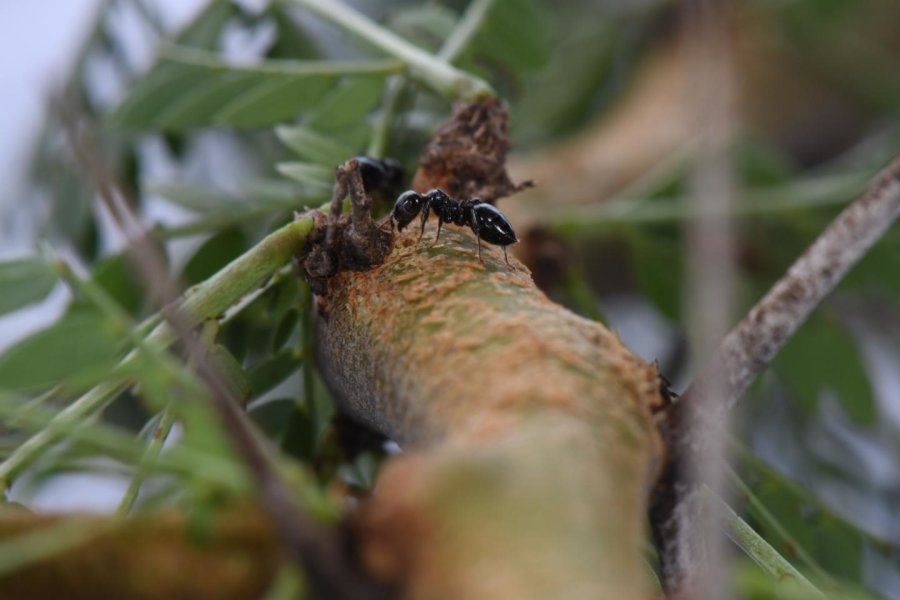
This photograph shows acacia ants on their host tree (Crematogaster mimosae, Acacia zanzibarica). Credit: Felix A. Hager and Kathrin Krausa

'Seeing' Tails Help Sea Snakes Avoid Predators
February 15th, 2019: University of AdelaideNew research has revealed the fascinating adaptation of some Australian sea snakes that helps protect their vulnerable paddle-shaped tails from predators.
An international study led by the University of Adelaide shows that several species of Australian sea snakes can sense light on their tail skin, prompting them to withdraw their tails under shelter. The study has also produced new insights into the evolution and genetics of this rare light sense.
The researchers found that olive sea snakes (Aipysurus laevis) and other Aipysurus species move their tail away from light. They believe this is an adaptation to keep the tail hidden from sharks and other predators.
"Sea snakes live their entire lives at sea, swimming with paddle-shaped tails and resting at times during the day under coral or rocky overhangs," says study lead author Jenna Crowe-Riddell, PhD candidate in the University of Adelaide's School of Biological Sciences. "Because sea snakes have long bodies, the tail-paddle is a large distance from the head, so benefits from having a light-sense ability of its own.
"The olive sea snake was the only reptile, out of more than 10,000 reptile species, that was known to respond to light on the skin in this way."
The researchers tested for light-sensitive tails in eight species of sea snakes, but found that only three species had the light-sense ability. They concluded the unique ability probably evolved in the ancestor of just six closely related Australian species.
"There are more than 60 species of sea snake so that's less than 10% of all sea snakes," says Ms Crowe-Riddell. "We don't know why this rare sense has evolved in just a few Aipysurus species."
The researchers used RNA sequencing to see what genes are active in the skin of sea snakes. They discovered a gene for a light-sensitive protein called melanopsin, and several genes that are involved in converting light into information in the nervous system.
"Melanopsin is used in a range of genetic pathways that are linked to sensing overall light levels around us. It is even used by some animals, including humans, for regulating sleep cycles and in frogs to change their skin colour as a camouflage," says Ms Crowe-Riddell.
Lead scientist Dr Kate Sanders, ARC Future Fellow at the University of Adelaide, says: "We've confirmed the ability of olive sea snakes to sense light in their tails and found the same ability in two other species. We've identified a shortlist of genes that are likely to be involved in detecting light. But further study will be needed to target these genes before we can really understand the genetic pathways involved in this fascinating behaviour."
Jenna M. Crowe-Riddell, Bruno F. Simões, Julian C. Partridge, David M. Hunt, Steven Delean, Julian G. Schwerdt, James Breen, Alastair Ludington, David J. Gower, Kate L. Sanders. Phototactic tails: Evolution and molecular basis of a novel sensory trait in sea snakes. Molecular Ecology, 2019; DOI: 10.1111/mec.15022
Mosquito Trapping Identifies Ross River Virus
- Avoid being outside unprotected at dusk, when mosquitoes are commonly active and cover up as much as possible with light-coloured, loose-fitting clothing and covered footwear.
- Apply mosquito repellent regularly to exposed areas. Repellents containing Diethyl Toluamide or Picaridin recommended. Repellents containing oil of lemon eucalyptus can also provide adequate protection.
- Don’t use repellents on the skin of children under the age of three months. Instead use physical barriers such as netting on prams, cots and play areas.
- Eradicate mosquito breeding sites around the home, including containers that hold water.
- Use flyscreens on windows and doors of houses and keep them in good order.
- When camping, use flyscreens, or sleep under mosquito nets.
End-Of-Life Care Should Focus On Quality Of Life, Not Prolonging It
Huge Boost To Support Student Welfare And Mental Health
New Heated Tobacco Device Causes Same Damage To Lung Cells As E-Cigs And Smoking
Indigenous Hunters Have Positive Impacts On Food Webs In Desert Australia
Why Does Your Work Matter? Research Summit Asks Global Thought Leaders To Answer The Big Question
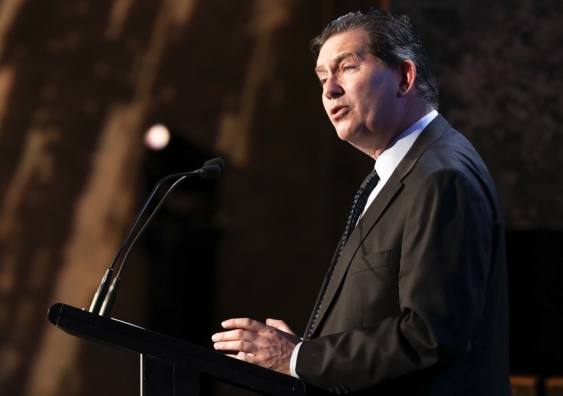
'What we do a very good job of is telling it to ourselves ... If we’re going to actually change that conversation, then that conversation has to have had engaged the public in a meaningful dialogue about what it is we do, why we do it and why it’s of value to them.' – Mark Searle, Executive Vice-President and University Provost at Arizona State University
Collaboration was needed between universities, government development partners, aid agencies and philanthropies to help inform government development priorities.
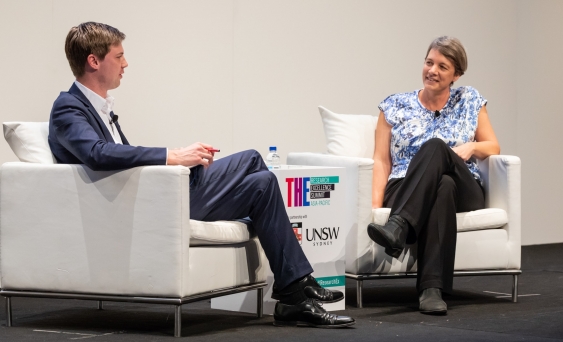
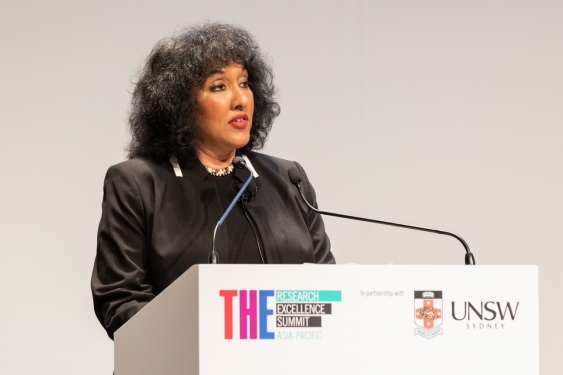
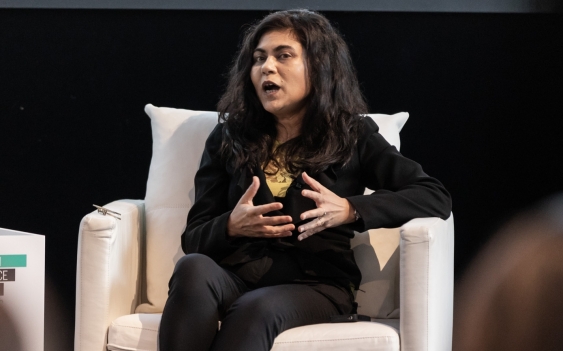
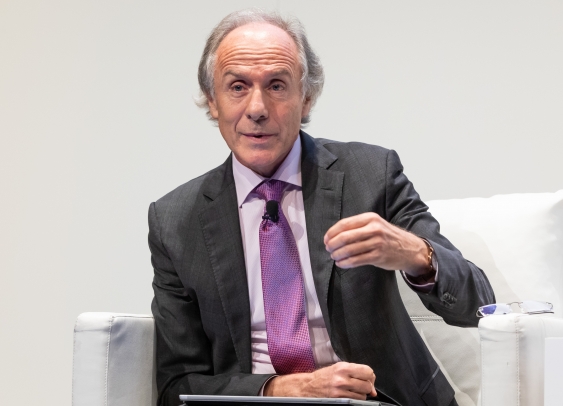
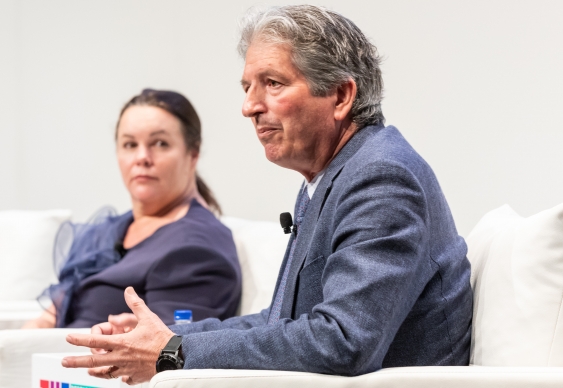
Disclaimer: These articles are not intended to provide medical advice, diagnosis or treatment. Views expressed here do not necessarily reflect those of Pittwater Online News or its staff.